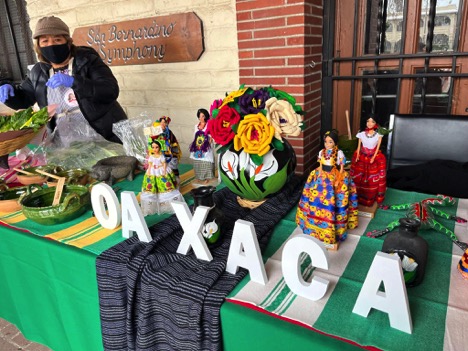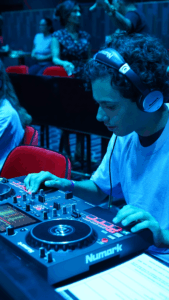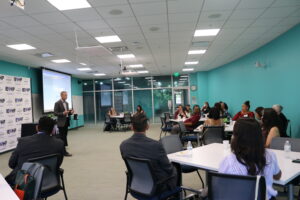CSUSB brings an Afro Latino celebration to San Bernardino
3 min read
February 25 marked the first of two consecutive days of Cal State San Bernardino anthropology museum’s Afro-Latino cultural event. The event took place at the Garcia Center, at 536 W. 11th St. in San Bernardino.
Director of the CSUSB anthropology museum and event organizer Arianna Huhn had a simple goal in mind: to bring attention to the existence of Afro-Latinos in Oaxaca.
“A lot of people, unfortunately, don’t recognize and don’t see blackness as a part of being Chicanx and I think the event, as part of Black History Month, is really important to bring attention to the fact that blackness can come in many forms,” Huhn said.
The dedication to this purpose was visible throughout The Garcia Center. Guests were treated to free catering from Cenadurìa Oaxaqueña Donaji and were able to browse art created to empower Afro-Latinos. As guests made their way through the center, they were able to view Oaxacan artifacts that were displayed at the entrance, they would then walk through a room containing the projects “Somos Negros de la Costa” and “Ébano”.
“Somos Negros de la Costa” (We are Blacks from the Coast), presented to guests through video, is a project dedicated to musical creativity and learning as forms of empowerment.
“Ébano” (Ebony), a photo exhibition created by Nicolás Triedo, features 35 black and white photos documenting the presence of Afro-Latinos in Mexico.
Guests were then treated to a musical performance from Academia Maqueos, an instrumental band from Los Angeles, in the next room. Along a wall was artwork from Raíz de la Ceiba, an art collective meant to empower and inspire Afro-Latino children living in Costa Chica, Mexico. Guests were also able to write letters of encouragement to the young artists that would later be delivered.
This room is also where Esteban Zuñga Ruiz was at work. Ruiz is an artist who has spent half of his life in Los Angeles, and the other half in Oaxaca. He was commissioned to create the turtle and bull sculptures that would be worn during the traditional Oaxacan dances, dances that Ruiz believes are pivotal features of Oaxacan culture.
“They observe the lifestyle and nature around them and it unites the elders and the children to pass down the traditions and have that balance and unity,” Ruiz said.
For Ruiz, these celebrations of culture can end a long history of ethnic erasure.
“Usually what happens is other ethnic groups feel superior and they try to dominate those other cultures through technology and financially, and they put them aside and suppress them,” Ruiz said. “That’s why Indigenous Afro people need to have their own space to express themselves.”
Among the many families attending was Alma Rivera, a San Bernardino resident who was with her husband and two young daughters.
Rivera was initially interested in the event due to the promise of Oaxacan food but saw the event as an effective way to spread acknowledgment of Afro-Latino people and culture.
“As a child, I had a doctor who was Black and spoke Spanish and I thought it was strange, but now as an adult, I recognize he is Afro-Latino, and I understand these people exist,” Rivera said. “So I think events like this are important to remedy these issues and make space in our community.”
As attendees viewed and listened to art created by Afro-Latinos, it became clear that community spaces, like art centers, can play a role in ending erasure and beginning a newfound cultural education.





